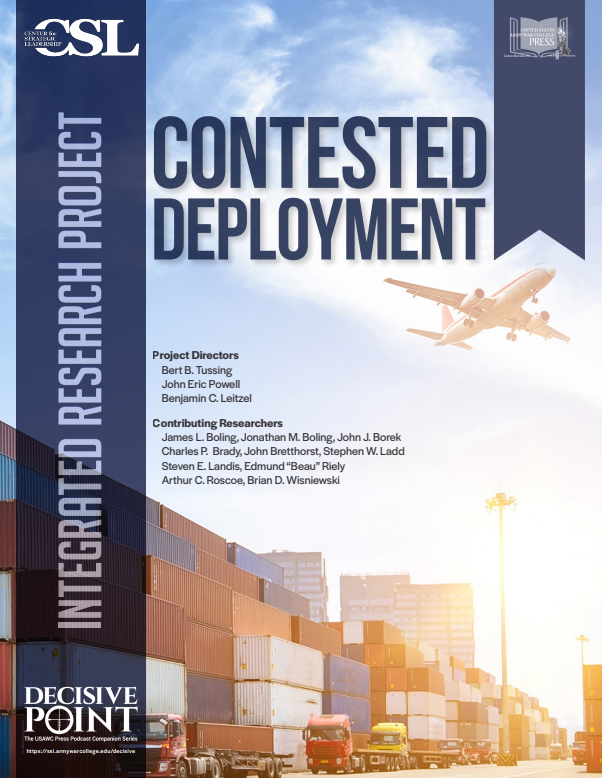 Bert B. Tussing, John Eric Powell, Benjamin C. Leitzel
Bert B. Tussing, John Eric Powell, Benjamin C. Leitzel
With James L. Boling, Jonathan M. Boling, John J. Borek, Charles P. Brady, John Bretthorst, Stephen W. Ladd, Steven E. Landis, Edmund “Beau” Riely, Arthur C. Roscoe, Brian D. Wisniewski
As indicated in the 2018 National Defense Strategy and evolving Multi-Domain Operations doctrine, the assumption the homeland will provide a secure space for mobilization and deployment is no longer valid. This integrated research project goes beyond affirming this assumption and contributes to efforts to mitigate the concerns a contested deployment entails.
Following the introductory chapter, Chapter 2, “Army Deployments in a Contested Homeland: A Framework for Protection,” explores how current coordination and cooperation mechanisms between the DoD and state and local government may need realignment, with civil authorities preparing themselves to support military mobilization. Chapter 3, “Strategic Seaports and National Defense in a Contested Environment,” examines the 22 strategic seaports across the United States, identifying issues with throughput, structural integrity, security, readiness, funding, and authorities. Chapter 4, “Single Point of Failure,” identifies how strict adherence to a business efficiency model for munition production and distribution may jeopardize the successful employment of military forces. Chapter 5, “The Interstate Highway System: Reinvestment Needed before a Contested Deployment,” provides the status of the deteriorating road network and explains how associated vulnerabilities could be exploited by an adversary. The two appendices provide points for consideration on cyberattacks and defense and the impacts a full mobilization of reserve forces would have on the homeland.